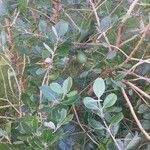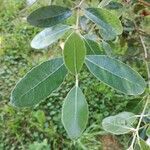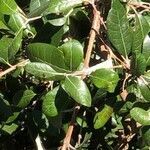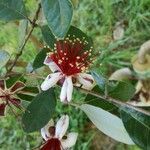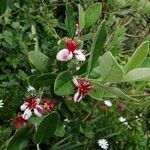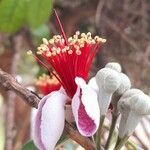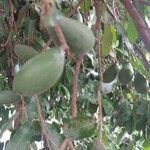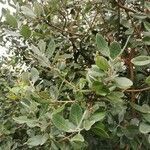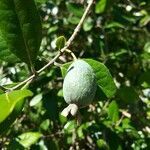Shrub or small tree 0.9–7 m tall with pale grey bark.. Leaves opposite, elliptic, or oblong-elliptic, 2.8–7 cm long, 1.5–4 cm wide, obtuse at the apex, smooth and glossy olive-green above, densely white-tomentose beneath.. Flowers in 1–3-flowered axillary or terminal cymes.. Calyx-tube and outside of lobes white-tomentose.. Petals white or pink outside, crimson-purple or lilac-pink inside, up to 2 cm long.. Stamens 1.5–2.5 cm long, with crimson or purple filaments and yellow anthers.. Fruit dull green or yellow-green, often with dull red or orange blush, oblong or ellipsoid-ovoid, 2.5–8 cm long, 2.8–5 cm wide.. Fig. 4/4–5, p. 14.
